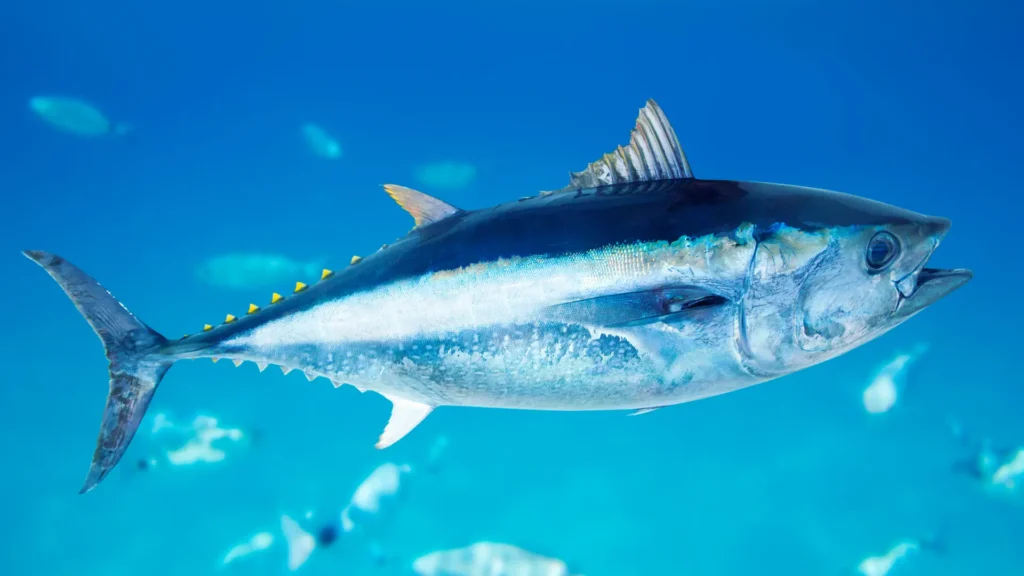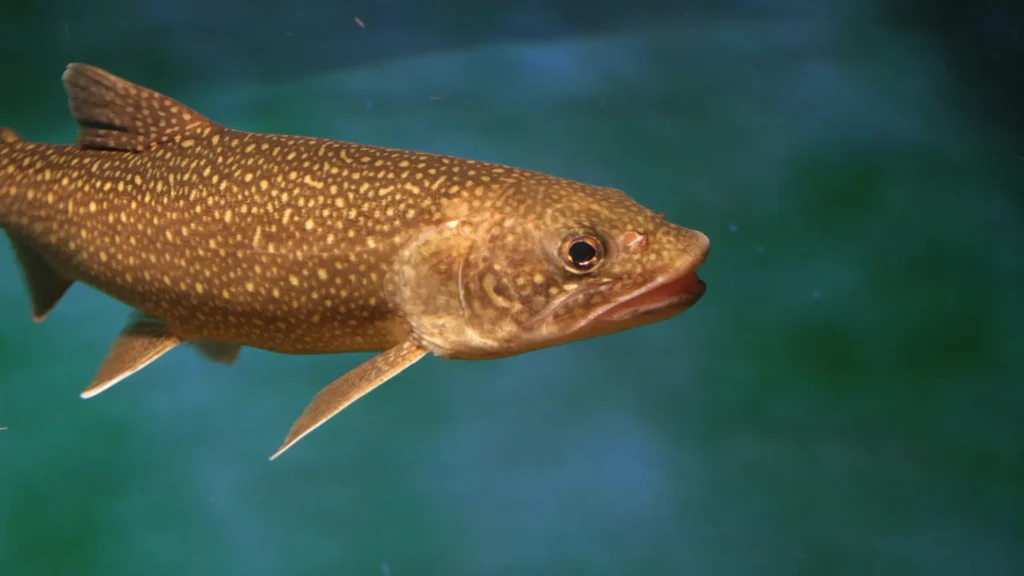When it comes to handling catfish, it’s important to be mindful of the potential risks involved. These bottom feeders have dorsal and pectoral fins that are equipped with small, sharp spines. These spines can easily puncture the skin, causing discomfort or even injury. To avoid the unpleasant experience of a catfish “sting,” it’s best to handle them with caution.
One effective technique for safe handling is to carefully grip the upper body of the fish behind the fins. This area is generally free from spines, minimizing the chance of getting pricked. Position your hand to confidently handle your catch, whether you’re moving it to a cooler or releasing larger fish.
Taking these precautions not only protects you from potential harm but also ensures the well-being of the catfish. So, remember to handle them with care and respect.
To start of the article, let’s first understand the catfish anatomy.
Catfish Anatomy
Catfish don’t actually sting. Their whiskers, barbels, and fins are harmless and cannot sting. While mishandling these can cause discomfort, they do not possess stinging capabilities. This myth applies to all catfish species, as their anatomy is relatively consistent, with minor differences in areas like the anal fin.
When handling catfish, it’s important to understand their anatomy, including the dorsal fin, pectoral fins, and whiskers near their mouth. Despite concerns, catfish whiskers are harmless and cannot sting or harm you. They are soft and pliable like a dog’s whiskers.
Where we need to exercise caution is with the dorsal and pectoral fins. These fins are situated behind the head on each side and on top of the fish. Catfish have a soft body when approached from the back, but they also possess a hard spine along the fin, especially towards the front near the head.
The tip of these spines is sharp and pointed, especially in smaller catfish, particularly channel cats. It’s important to note that these spines do not “sting” and touching them won’t cause any pain. The pain and injury occur when these spines puncture the skin. Catfish have venomous spines in their dorsal and pectoral fins. These spines can cause swelling and increased blood flow if they puncture the skin.
Interestingly, smaller catfish are more likely to cause harm to people. The spines in larger catfish tend to be duller and blunter, making them less likely to cause injury. The tips of the spines in smaller fish, however, are sharp like needles. As catfish grow larger, their spines become blunter and less likely to cause harm.
Catfish Handling Techniques
Caution is crucial when handling catfish, especially smaller ones. While larger catfish are not a concern, smaller ones can be risky due to their sharp fins and spines. Take care to avoid injuries when releasing them after removing the hook.
While catfish don’t have stingers like other fish, handling smaller ones requires caution due to their sharp spines and potential for injury.
- Small Catfish – When handling catfish, it’s best to hold them from the top. Place your hand behind the pectoral and dorsal spines, with your thumb and forefinger resting behind the dorsal spine.
- Medium Catfish – When handling catfish, adjust your approach based on their size. For medium-sized catfish, use a lip grip tool like the Team Catfish Lip Grips. This tool provide a secure grip on the fish’s lip, ensuring safe handling.
- Big Catfish – When handling big catfish, use a dip net and lip grips for a safe approach. Practice catch and release for larger catfish, but be cautious when putting your hand in their mouths as it poses greater danger than their fins.
While it is possible to hold a catfish by the mouth, it’s important to consider the size of the fish. When dealing with smaller catfish, it is generally recommended to hold them by wrapping your hand around their body. This method provides better control over the fish and reduces the risk of getting finned.
Be cautious when handling larger catfish, as their mouths can be abrasive. Avoid grabbing their mouths to prevent painful injuries called “catfish knuckles”.
Anglers can use fish grips designed for catfish handling to prevent incidents and maintain control over the fish. These grips provide a secure hold without causing harm.
Holding and Releasing a Catfish
- Hold the catfish securely by applying gentle and equal pressure with your whole hand. Be mindful of its slick skin and mud coating, which can make handling challenging. Stay alert for sudden movements, as a freshly caught catfish may try to escape your grip unexpectedly.
- To handle a heavy catfish, use your other hand for support and grip the tail section. This will provide stability and make it easier to lift. It also allows better control if the catfish starts thrashing. Keep your support hand away from the spines.
- Handle catfish carefully when releasing. Whether keeping or releasing them, caution is key. Lower them near the water and release smoothly, avoiding their back. Instead of throwing away, let them slip beneath the surface and swim off. Keep fingers behind spines for their safe departure.
Safety Precautions and Health Considerations
When you experience a catfish finning incident, you have two available options for treatment. The first is to seek medical advice from a healthcare professional, while the second option is to opt for the “Belly Slime Treatment.”
If you choose to seek medical help for a catfish sting, doctors will typically promptly clean the wound with an antiseptic and then provide appropriate wound care. This is considered basic first aid for such an injury.
If you choose an advice from an old angler, the “Belly Slime Treatment” is the way to go. Rub the wound on the catfish’s belly or soak the affected area in hot water and you are good as new.
The spines of catfish are the main concern when getting finned. If a spine breaks off inside the body, it can lead to a serious infection. Use tweezers to remove shallow spines, but deep ones may require professional medical attention.
If you get finned by a smaller fish it’s important to make sure you inspect the fish and confirm the fins are in tact.
Catfish Infections
Catfish have three barbs with attached spikes that can lie flat or become erect. One barb is connected to the dorsal fin, while the other two are on the pectoral fins near the head. Catfish stings from their venomous spines cause temporary pain, redness, and swelling lasting up to 48 hours.
It is worth noting that saltwater catfish stings tend to be more severe and have a higher risk of infection. Infections resulting from saltwater stings often involve the Vibrio organism, while freshwater stings may involve Aeromonas. It’s important to understand that catfish stings can lead to polymicrobial infections, involving multiple types of organisms.
Medical Puncture Treatment
- Submerge the affected area in warm water (100-110 degrees) to neutralize venom and relieve pain quickly. Aim for a temperature similar to a mildly uncomfortable hot tub. Keep the area submerged for about 30-60 minutes.
- There has been no research conducted thus far that supports the effectiveness of using additives such as salt, peroxide, or any chemicals in the water to assist with catfish handling.
- It is important to refrain from rubbing wounds on the slime or belly of a catfish. Although it may seem like it provides pain relief, this action actually increases the risk of introducing harmful bacteria. Therefore, it is advisable to avoid this practice altogether. By doing so, you can help prevent potential infections that may arise from exposing wounds to the catfish’s bacteria.
- Keeping your tetanus vaccine current is essential when handling catfish. This preventive measure helps safeguard against potential harm, as catfish have sharp fin spines that can cause puncture wounds. If you’re unsure about your immunization status, consult with your healthcare provider to ensure your well-being by considering vaccination.
- Do not close the puncture wound.
- Monitor for redness, swelling, and warmth as potential signs of cellulitis. If these symptoms occur, seek medical attention as it may be caused by one of the mentioned organisms.
Conclusion
Anglers must master catfish handling for the well-being of the fish and their fishing experience. By following this guide, they can prioritize catfish safety while enjoying their time on the water.
Handle catfish gently, minimize stress, and use proper catch and release techniques for conservation and better fishing. With knowledge, respect, and responsible practices, anglers can contribute to preserving catfish populations for future generations.
If you have any concerns or suggestions regarding proper catfish handling, please feel free to share them in the comments section below.
FAQS
What not to touch in a catfish?
Don’t worry about catfish whiskers, they won’t harm you. But be careful with their dorsal and pectoral fins, as they can cause injury.
What is the proper way to hold a catfish?
Properly handle catfish by avoiding their spines. Securely grip the upper body, behind the fins, to minimize injury risk.
Should you wear gloves when handling catfish?
To handle larger catfish, use specialized rubber gloves that preserve their protective slime. Moistening the gloves before handling ensures a gentle touch, minimizing harm to the catfish.
What do you do if a catfish barb gets stuck in your hand?
To handle a catfish sting, cleanse the wound thoroughly with fresh water. Avoid taping or stitching the wound. If the sting becomes infected, take oral antibiotics for at least five days after the infection clears. This will promote proper care and healing of catfish stings.
What is it called when you grab a catfish?
Catfish handling techniques have a rich history that spans centuries. Among these techniques is hand grabbing, which is known by various names depending on the region and culture. Some of the popular names for hand grabbing include noodling, hogging, and tickling.
Additional Resources:
- 3 Ways to Hold a Catfish: https://www.wikihow.com/Hold-a-Catfish#:~:text=The%20dorsal%20and%20pectoral%20fins,the%20spines%20don’t%20reach.
- Catfish Sting Treatment: https://www.emedicinehealth.com/catfish_sting/article_em.htm
- Symptoms and Sings of Catfish Stings: https://www.emedicinehealth.com/catfish_sting/symptom.htm
- How Should You Hold a Catfish to Avoid Stings: https://www.quora.com/How-should-you-hold-a-catfish-to-avoid-their-stingers#:~:text=You%20can%20hold%20a%20catfish,wear%20gloves%20for%20added%20protection.
- What Happens if You Touch a Catfish Whiskers: https://www.quora.com/What-happens-if-you-touch-catfish-whiskers#:~:text=A%20catfish’s%20whiskers%20cannot%20cut,painful%20when%20you%20get%20stabbed.


